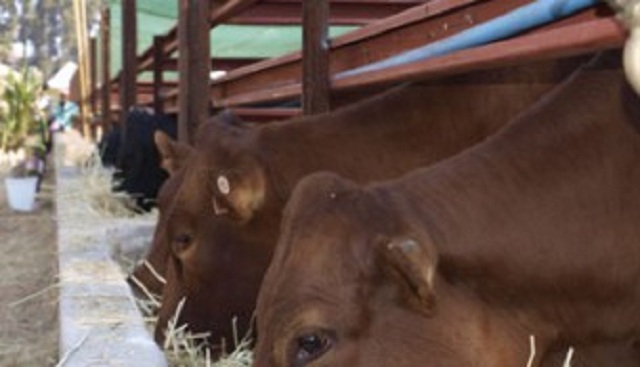
The Sunday News

Mhlupheki Dube
THIS week we want to look at a simple animal nutrition requirement. I am talking here of one of the minerals that animals need to take in order to balance their feed requirements. One such mineral is the phosphorous mineral.
The mineral is often provided through the food that animals eat, either in confinement or when they are out grazing in pastures.
In most cases, cattle are deficient in certain essential minerals as well as some trace minerals because the soil is deficient in that area.
One of the minerals that is very important for the health of cattle is phosphorous. Your cattle may be fine if they are eating a diet that contains a certain percentage of cereal grain or if they are grazing in areas where phosphate fertilisers have been used. In some cases, it may be necessary for the phosphorous status to be determined by analysing a rib bone that comes from the cattle.
One usual sign that shows your herd is deficient in minerals such as phosphorous is when you see your animals having appetite for unusual objects such as pieces of cloth and bones. However, if sheep are chewing bones, it is not always a sign that they are lacking in phosphorous.
Low phosphorus levels in cattle can be tolerated for a short amount of time but if the deficiency is seen for a long time, it can cause serious problems. One of the issues that can occur with the health of the cattle due to a phosphorous deficiency is that their appetite is reduced.
It can also affect their growth rate, fertility and the amount of milk that they are giving. Thus a herd may have low calving percentages and poor weaning rates.
If the phosphorous deficiency is allowed to go on for a longer time, it can affect the bones of the animals as well as their teeth, leading to abnormalities. This is often seen in the way of an arching back, stiffness or lameness.
Chronic phosphorus deficiency is commonly caused by inadequate feed intake or inadequate phosphorus content in the ration over an extended time. This can be seen in grazing animals in arid regions with low phosphorus content in soil. Phosphorus depletion can also result from chronic renal tubular disease due to impaired renal reabsorption of phosphorus or primary hyperparathyroidism causing increased renal phosphorus excretion.
Young animals which are affected by phosphorous deficiency grow slowly, develop rickets, and tend to have a rough hair coat, whereas adult animals in early stages may become lethargic and lose weight. Decreased milk production and fertility have been attributed to phosphorus depletion. In an advanced state of phosphorous deficiency in animal diet, animals may develop pica (habit of eating substances or dirt which has no nutritive value), osteomalacia (softening of bones due to demineralisation), abnormal gait, and lameness, and eventually become recumbent.
Symptoms of phosphorus deficiency in a herd is not instantly obvious as the animal draws their phosphorus from their bones and this takes time to deplete. It also takes time to replenish. Symptoms in animals are that they have poor growth, have weak bones, and they eat less. Often the animals will chew bones, lose condition faster than a non-deficient animal, particularly in the latter stages of dry seasons as the feed reserves dwindle.
Due to the habit of eating unusual substances and objects generally animals that are deficient in phosphorous are more susceptible to diseases, particularly botulism.
Botulism is caused by an organism that produces a toxin which through paralysis of the muscles can be fatal to cattle.
It is very prevalent in the soils and is present in old bones and carcasses which the animals will chew as they are craving and seeking for phosphorus.
Animals receiving adequate phosphorus are healthier throughout their whole life and are much more likely to have increased reproductive fertility. Producing healthier calves, as a cow with good phosphorus levels can maintain a better milk supply. The calves produced by such animals will also grow into strong animals themselves with heavier body weights and better general health.
Phosphorous deficiency and the subsequent craving for unusual objects by your animals can be corrected by providing mineral supplements for the animals. There are commercial mineral licks that can be provided for your animals to lick and supplement their mineral requirements.
The mineral lick which is also referred to as the summer block provides more than one mineral component. It is therefore a good practice to observe animals in your herd which have an appetite for unusual non-nutritive substances and take corrective action.



